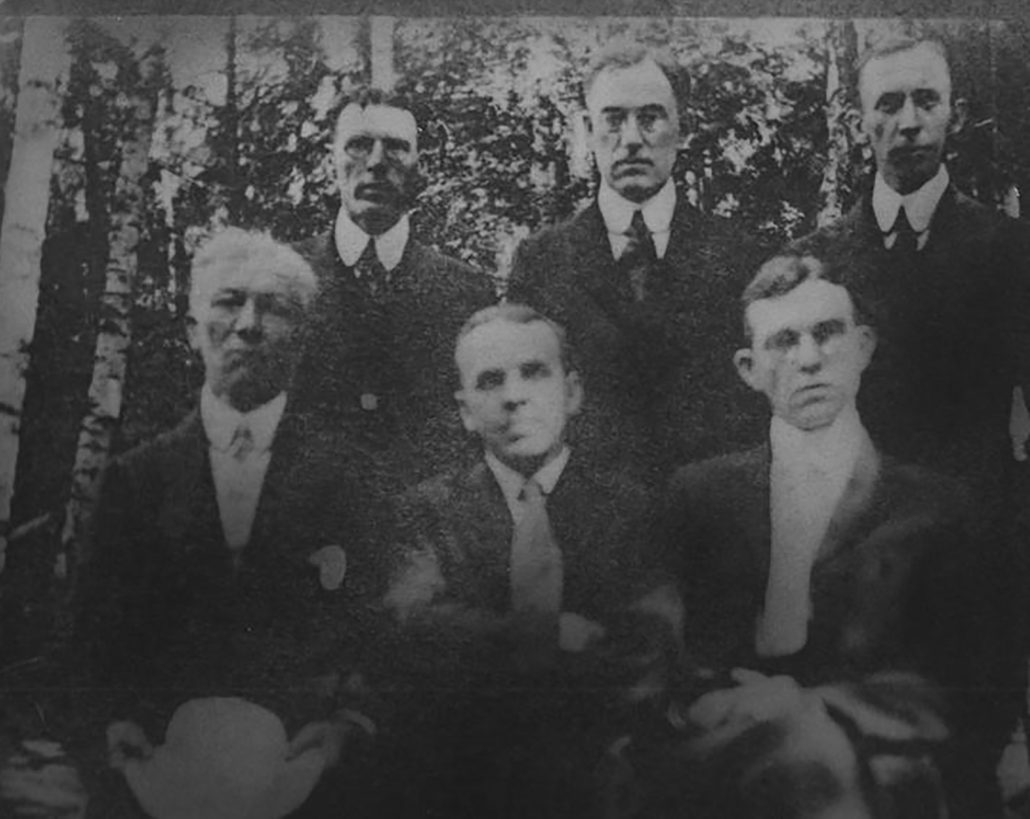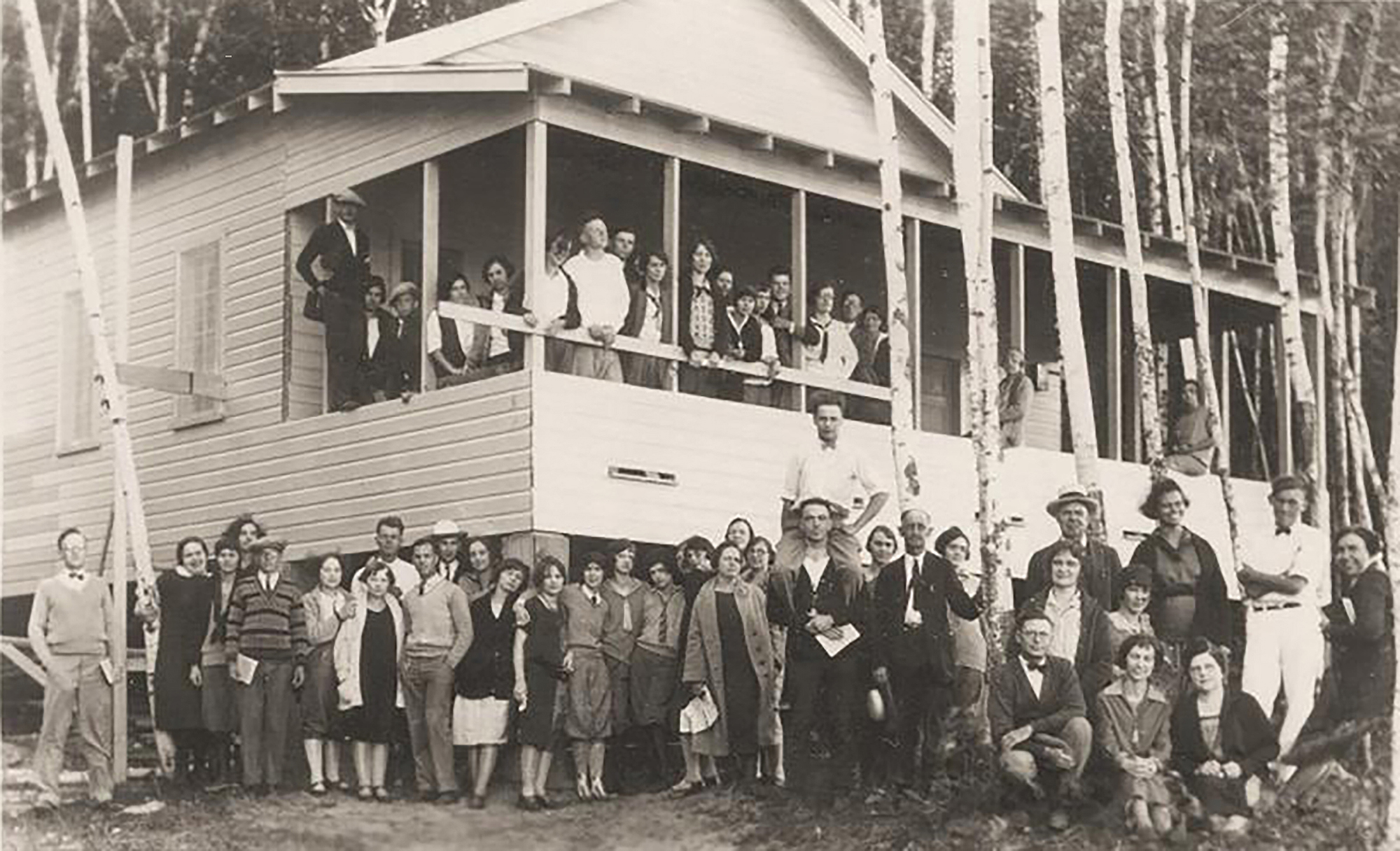More than 100 years of history on Crystal Lake’s south shore
By Marjorie Elliott
Current Contributor
After being in existence for more than 100 years, the Crystal Conference Center—a historic facility on the south shore of Crystal Lake, owned by the Christian Church (Disciples of Christ) Michigan Region—is holding an open house and pig roast on Saturday, June 1, to introduce themselves to the community.
“Even though we celebrated our 100th anniversary a few years ago, many still don’t know we’re here,” says Michael Dirksen, chairman of the Center’s board. “If anything, we’re often confused with the better-known Congregational Summer Assembly [CSA] at the west end of Crystal Lake. I think we are the best-kept secret in Benzie County, and we want that to change.”
Over the years, the Center has evolved, adding venues and opening its facilities for use by organizations and individuals outside the church. There is a full summer schedule of overnight church camps for different age groups, as well as a day camp—they all fall under the “Crystal Camp” moniker. Many kids come to the camp from Disciples of Christ churches throughout the state, but anyone is welcome. The Center has also rented to groups for yoga retreats, wedding parties, family reunions, and other religious and non-profit organizations, among others.
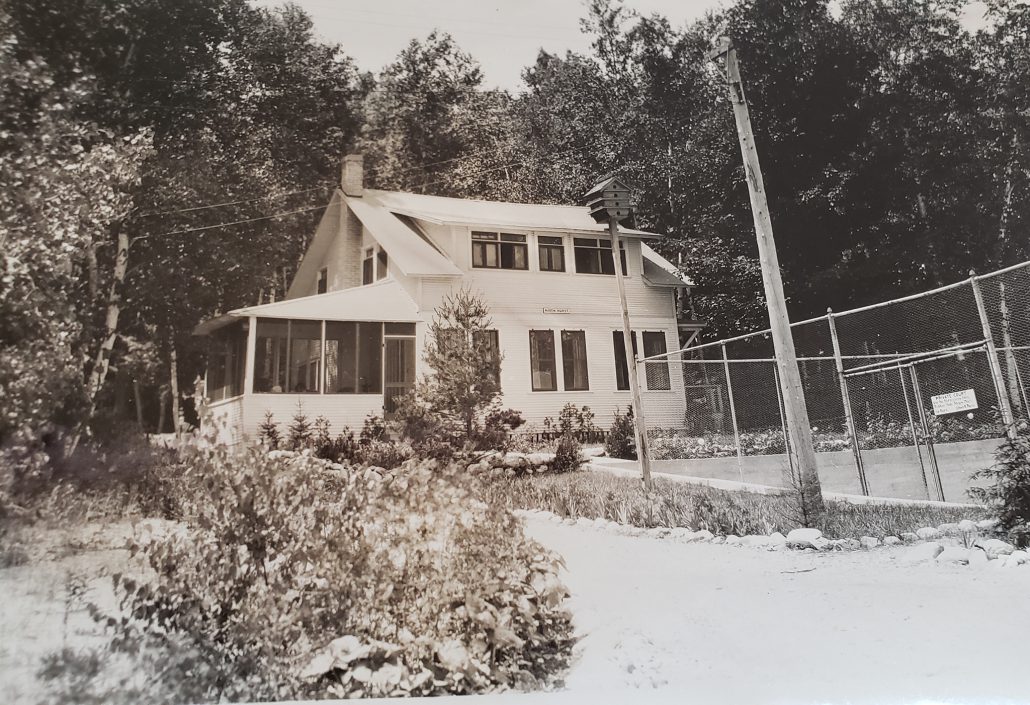
This is a distinctive change from the Center’s early years.
The Crystal Conference Center was originally established as the Crystal Beach Christian Assembly in 1918, when the Ann Arbor Railroad gave a conditional land offer of 163 acres on Crystal Lake’s south shore—between what is now Lobb Road and Robinson Road—to the Christian Church (Disciples of Christ).
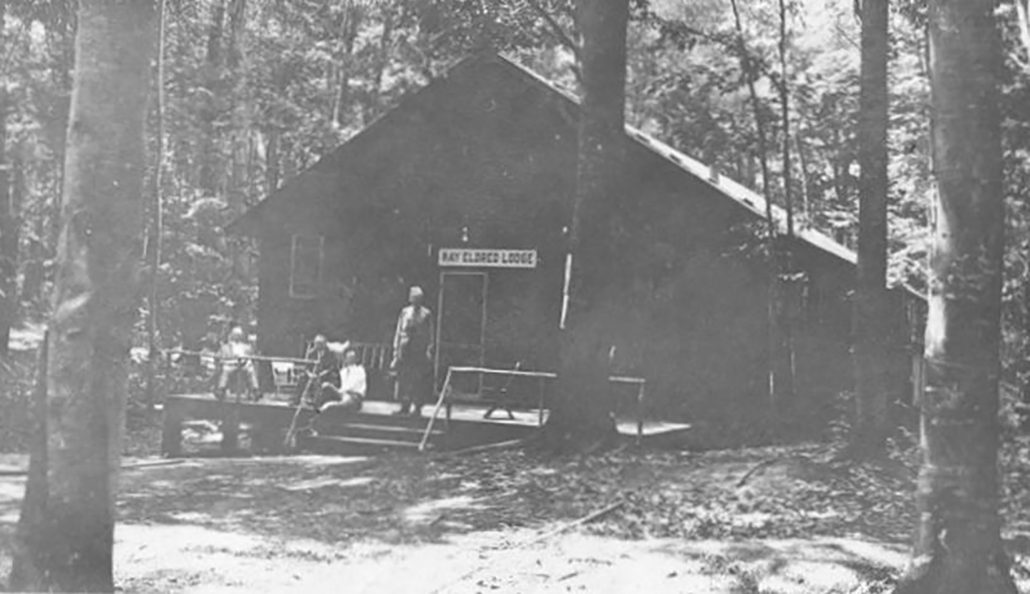
Similar to the offer that had been made to the CSA for 175 acres at the west end of Crystal Lake just a few years earlier, in 1905, the offer to the Christian Church required that they make improvements totaling $250,000 over a period of 10 years, that a summer assembly be held there each year, and that cottages be built before the deed would be transferred. With the logging industry in sharp decline, the railroad was looking for other ways of creating demand for rail travel, and they were counting on summer assemblies and cottage development to draw passengers from all over the Midwest.
This worked out perfectly, because the early founders of the Crystal Beach Christian Assembly had a similar goal—they were members of the Christian Missionary Society of the Michigan Christian Church looking for a place to create a conference area for denomination members. In 1917, after looking at locations in Muskegon, Old Mission Peninsula of Traverse City, a lake on the east side of the state, and the south shore of Crystal Lake, they unanimously decided to accept the railroad’s offer of the latter.
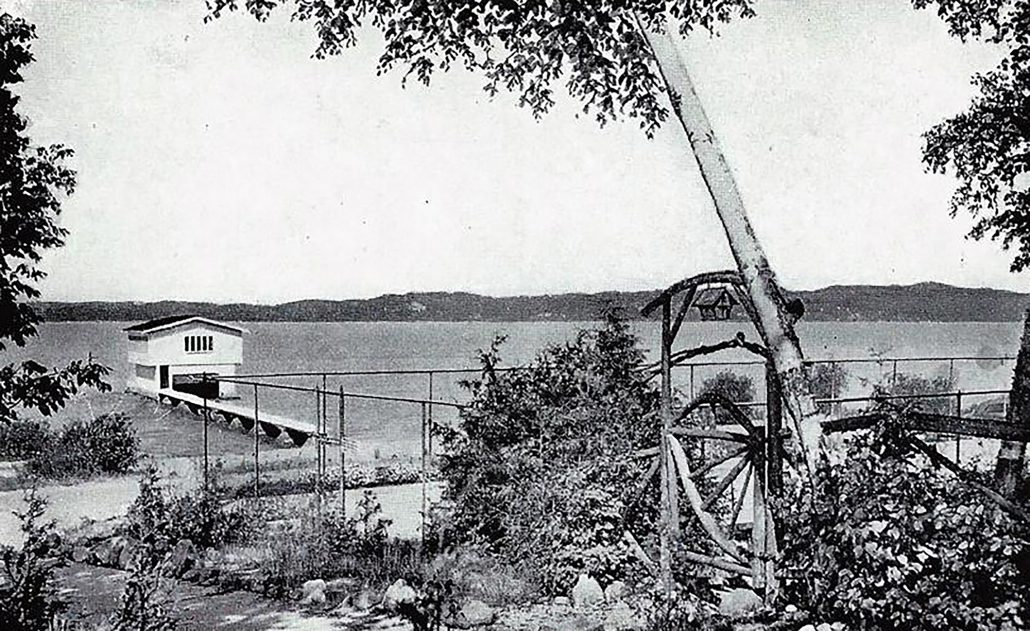
However, the decision was not made without some concerns, as the property consisted of several steep, rugged bluffs and was covered with an almost impregnable tangle of second-growth forest. In addition, there were no roads, no electricity, and no wells on the property.
The founders’ inspection trip in 1917 had required a special train ride to Frankfort—provided by the railroad—then being driven by car to the Robinson Resort on Crystal Lake, where Robinson Road is located today, and from there, being taken by boat to the property.
But in the end, the beautiful, wooded property on a stunning lake with 1.25 miles of beachfront won them over.
The founders of Crystal Beach Christian Assembly hoped to draw church members from across the country to attend a yearly six-week religious meeting—and that members would eventually lease land from the church and build cottages on the 163-acre property.
With a donation of $2,500 from the citizens of Frankfort, building began in 1918. Two one-room buildings were erected prior to the arrival of the first members of the church; one was to be used as a tabernacle, the other as a residence for the first three families—privacy provided by blowing out the lights, since there was no electricity.
A large tent was set up for use as a kitchen and dining room, but as soon as the canvas was stretched, it was discovered to be largely a collection of holes. Ultimately, the “kitchen” had to be moved to one of the buildings, and worship services were instead held in the “holy tent.” (A fun play on words for the “holey” tent, with some light religious humor thrown in.)
By July 1918, there were 109 people attending meetings, living in tents, carrying all of their water from the lake in bucket brigades, and publishing a newspaper titled Crystal Beach News—typed with much carbon paper—with Reverend M.H. Gerrard as editor in chief.
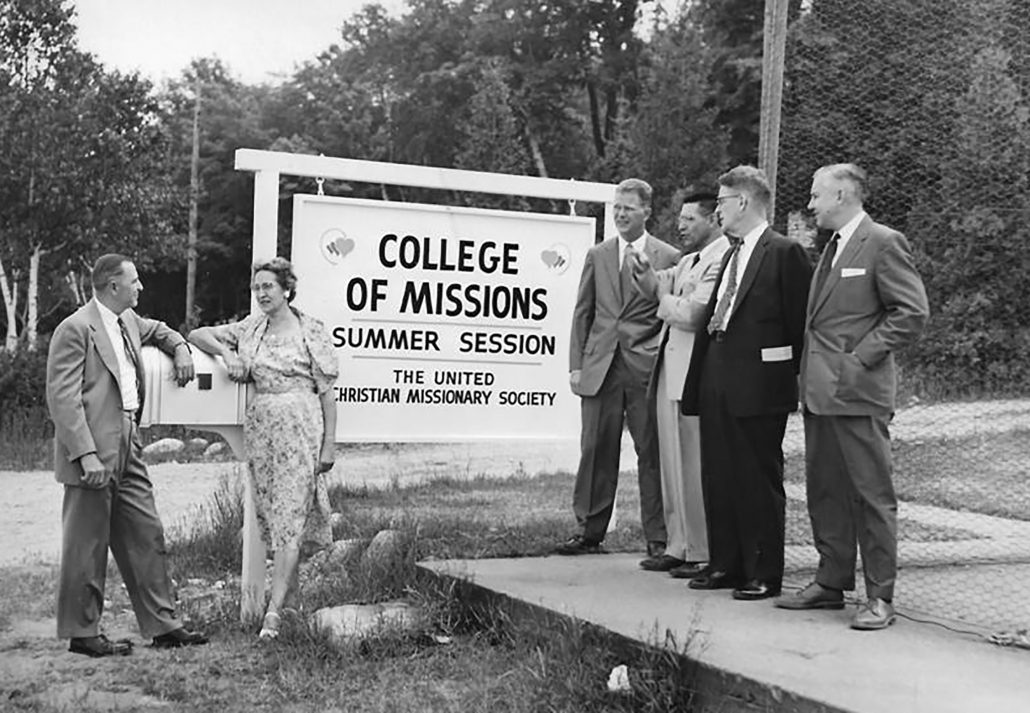
That first summer, one cottage was built; the owner, Reverend William Vernor Nelson, described it as “a superb structure facing the lake, rested upon blocks and made mostly of hemlock lumber and nails. There were several windows to let in fresh air and mosquitos.”
The only practical way to reach the camp was by boat, until late 1919, when the road and power lines along the south shore were extended. That year also saw the building of six more cottages, and worship services were moved out of the “holy tent” and into a new tabernacle, constructed of hemlock boards and a sawdust floor.
By 1927, all requirements of the Ann Arbor Railroad’s conditional land offer had been met. However, the railroad had changed hands and was now owned by the Wabash Line, which wanted to keep the deed to this increasingly valuable property. After a lawsuit was settled, the Christian Church became the permanent owners of the land in 1928.
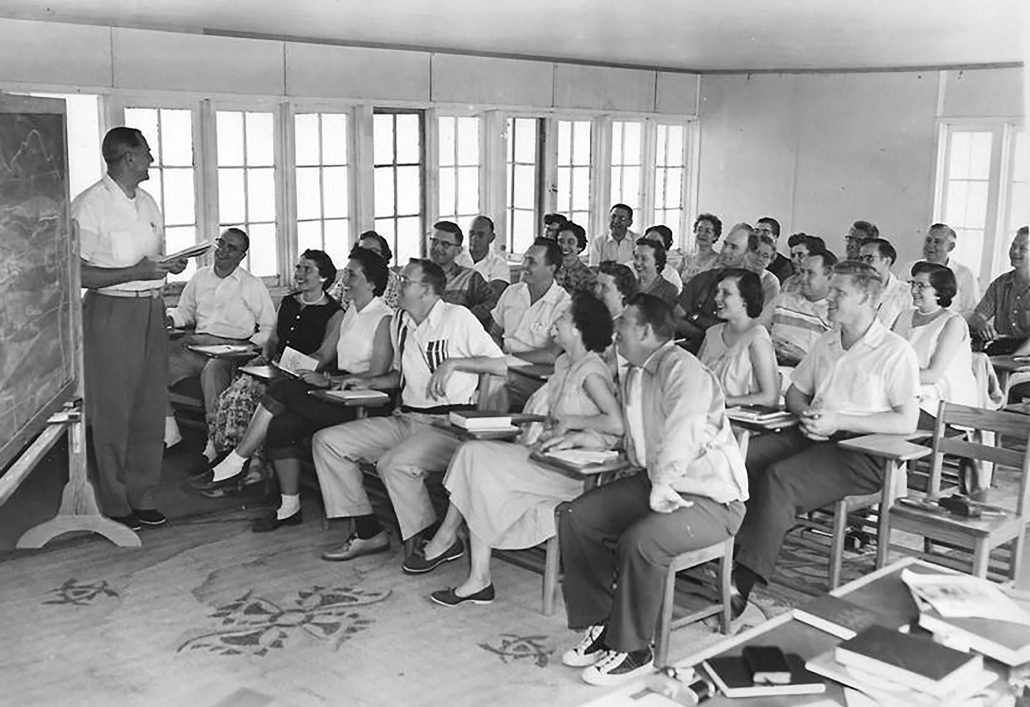
The property was platted to create a central camp and meeting area,100 plots to build cottages, and several acres of natural wooded area.
Initially, the Christian Church required 80 percent of those leasing these plots to be members of the church, with special consideration given to ministers of the church. Later, the rules were relaxed somewhat, and members of other denominations—with their pastor’s letter of recommendation—could lease property and become members of the Crystal Beach Christian Assembly.
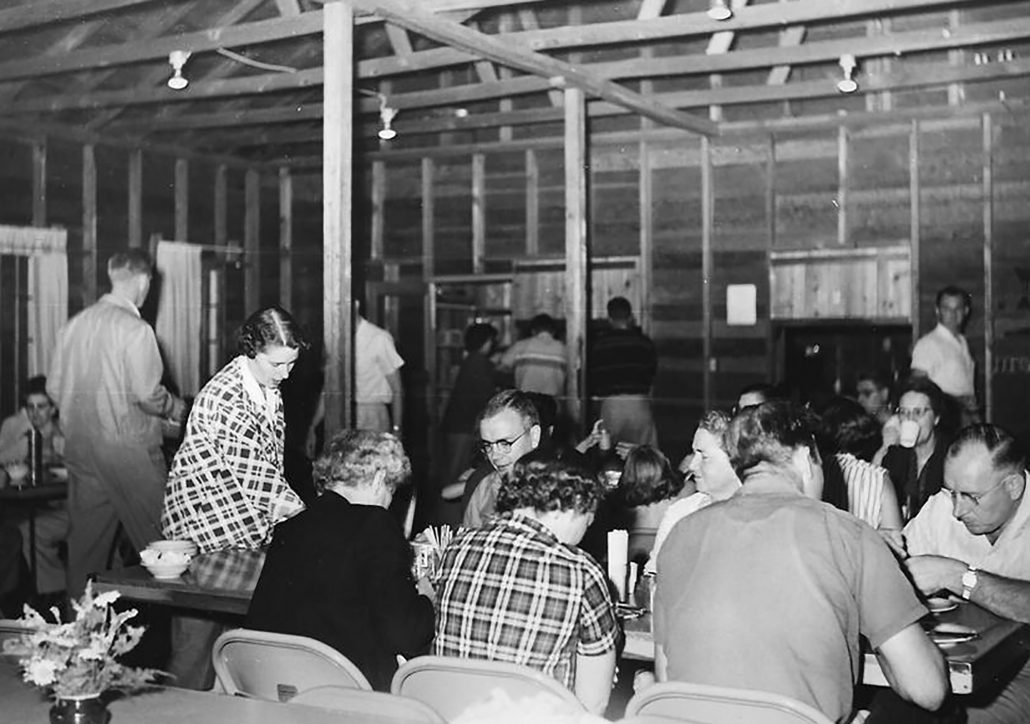
Albert and Harriet Martin were instrumental in the founding of the Crystal Beach Christian Assembly. They were part of the original founders, and in time, they donated their first cottage—including use of the boathouse and tennis court—to the United Christian Missionary Society for the summer training of missionary candidates, prior to their overseas postings.
To this day, the Mission House—the large white house behind the tennis court on South Shore Road—continues to be used as a retreat center and a summer rental cottage. The Martin cottage became the Mission House, and there have been no major changes to the original Martin cottage over the years. (However, the boathouse in front of the Mission House burned in 1972 and was never rebuilt.)
The Martins would often talk about their first car trip to Crystal Lake from their home in Grand Rapids in 1918; a trip which took 16 hours, due to the mostly gravel roads and five tire punctures.
The Crystal Beach Cottagers’ Association (CBCA), a homeowners’ association, was formed when the church sold the leased lots to the now 72 cottage owners in the early 1970s. In recognition of this change, the church changed the name of the Crystal Beach Christian Assembly to the Crystal Conference Center, as it is known today.
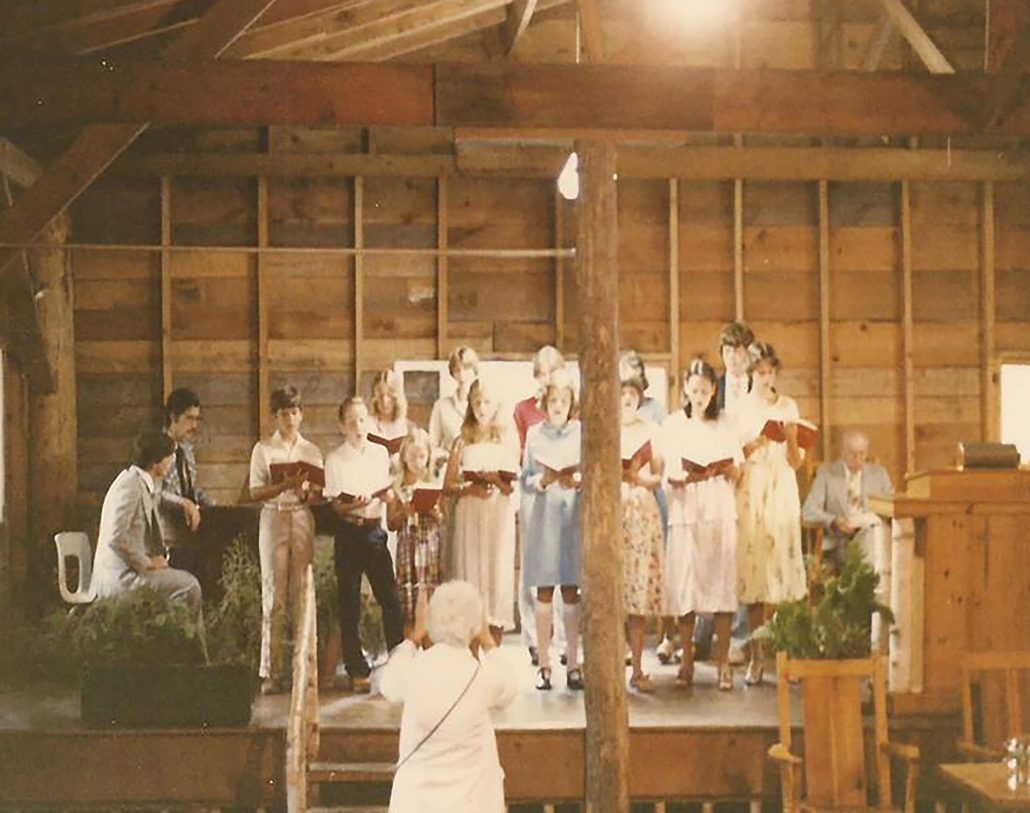
Although no longer officially connected, the Christian Church and the CBCA continue to share a long history and work together to preserve this part of the south shore of Crystal Lake. (Notably: Most of the property owned by the original founders is still owned by their descendants, two or three generations on. There are two lots that are owned by the homeowners’ association and have no buildings on them; they are used for a gathering place. Six of the 72 cottageowners own a second lot, which they have not developed. Thus 2 + 6 + 72 makes up the previously mentioned total of 80 percent of the 100 original lots. The other 20 plotted lots are still owned by the church. )
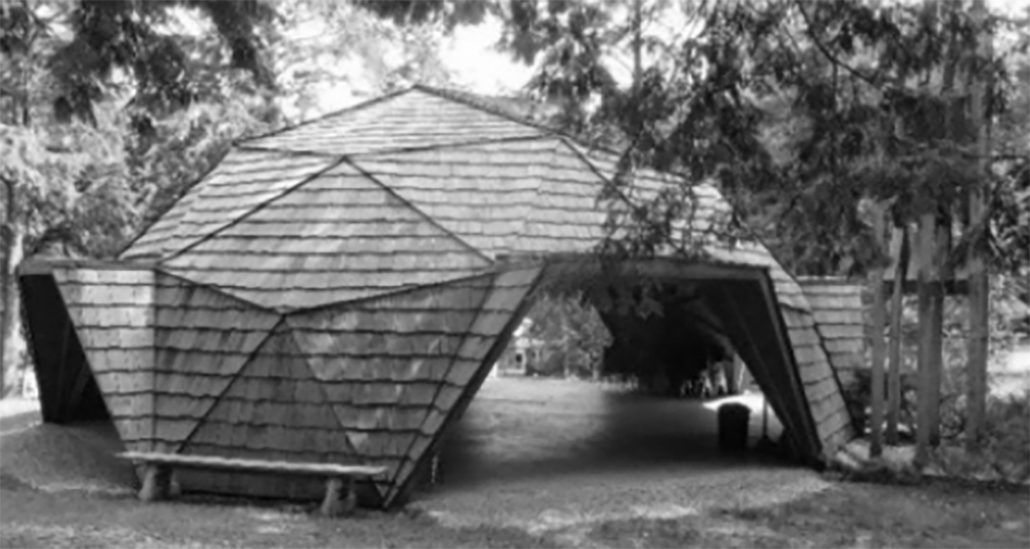
A few other pieces of land have been sold over the years, including one piece on the east end to the Owosso Girls’ Camp in 1926, but much of the original 163 acres remains intact.
Now more than 100 years later, the Crystal Conference Center is thriving and making plans to further improve and expand their facilities with a capital campaign expected to kick off later this year.
The open house and pig roast on Saturday, June 1, 2024, will run from 10 a.m. to 3 p.m. at the Crystal Conference Center, located at 2365 South Shore Drive East. It is free and open to the public with a full barbeque lunch, live music, activities for all ages, and tours of the facilities. For more information on the Crystal Conference Center, visit CrystalConferenceCenter.org online or call 517-372-3220. To discuss booking your group or family event, contact reservations@uccr.org or call 800-678-5102.
Historical information in this article was taken from “100 Years at the Crystal Beach Christian Assembly” by Reverend Russell M. Fuller. Assistance was also received from Pat and Scrib Sheafor of Frankfort.
Featured Photo Caption: The old dining hall of the Christian Beach Summer Assembly was located immediately west from the tennis court, just above the parking lot. Many young folks took turns over the years running a little store that was built under the front porch; they sold bread, canned goods, pop, and candy, among other things. Image courtesy of the Crystal Conference Center.
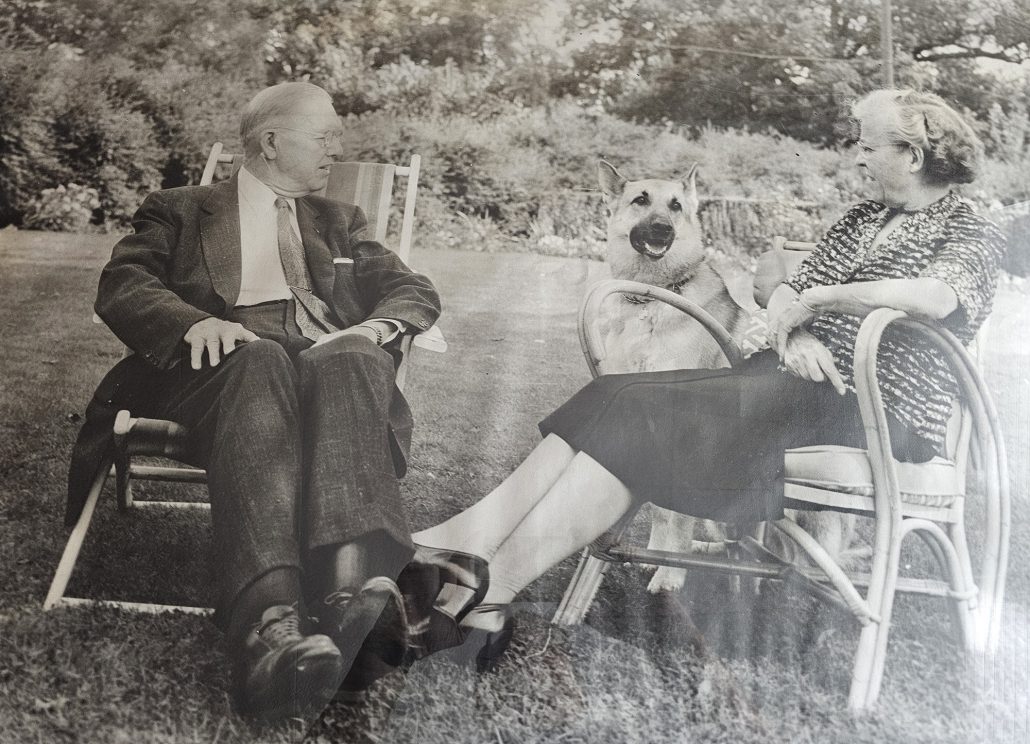
SIDEBAR
The names of those present at the first inspection trip back in 1917 were carved as a permanent record on the smooth underside of a big piece of lichen taken from the woods, and this souvenir is still carefully preserved by the Martin family, to whom it was presented by John Woodward of Frankfort, the carving having been done by Albert Martin.
The names imprinted, in order of appearance, were:
Mrs. A.H. Martin
Frank Hancock
B.W. Snider
H.M. Frederick
Geo. R. Robinson
J.F. Hoffstetter
C.E. Howett
Wm. Verner Nelson
J. Frank Green
G.A. Weller
Mrs. G.A. Weller
H. Garrard
Albert H. Martin
John Woodward
Roy Collins
